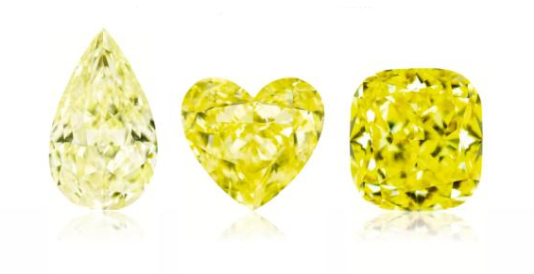| INHORGENTA MUNICH 2022 in Yellow |
 |
| In this Edition: |
 |
|
|
|
Dear Customers and Friends of Our Natural Fancy Coloured Diamonds,
The time has come at last!
This April, we will finally be able to welcome you back in person to Inhorgenta!
And, of course, we will be bringing with us all the new treasures we’ve recently sourced just for you.
We are very much looking forward to personally connecting with you once again and hope for spring-like weather so that we can perhaps even get together outside for a cup of coffee in the fresh air and sunshine! |
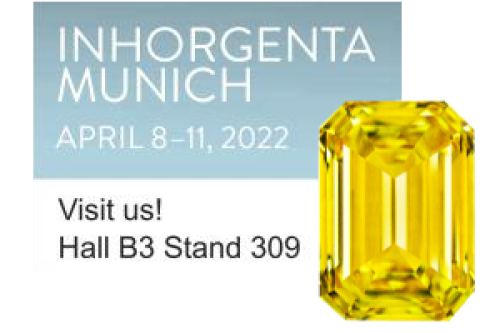 |
Your teams from Kulsen & Hennig GbR and Dominik Kulsen AG
Juliane Hennig
|
|
New Hall for Kulsen & Hennig and Dominik Kulsen AG!
This year, due to the fair being postponed until April, the hall layout has changed - you will find us at the same location, but now in Hall B3 at Stand 309!
We are looking forward to your visit!
All other hall and site plans can be found here.
|
|
Digital Reprint of Our Yellow Colour Card
In keeping with the start of the trade fair, which is finally taking place again, and the newly arrived spring season, we have redesigned our Yellow Colour Card.
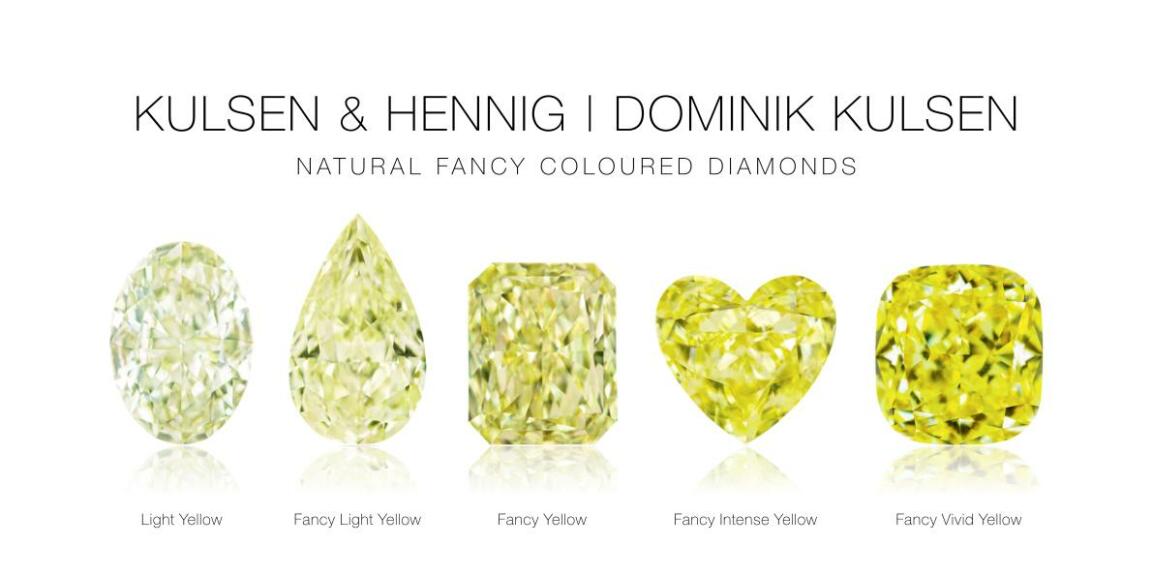
Yellow diamonds remain one of the most popular colours in the jewellery trade when it comes to Natural Fancy Coloured Diamonds. These diamonds occur either as pure yellow gemstones or as stones with secondary colours such as orange or green.
Pure yellow diamonds with light to moderately visible colour saturation are in the medium price range. Very bright yellow diamonds, however, are priced the same as the most expensive colourless diamonds, if not more. Only coloured diamonds whose colour saturation is clearly perceptible may be designated with the prefix "Fancy". The transition from colourless diamonds to coloured diamonds lies between Light Yellow (Z) and Fancy Light Yellow. Therefore, a diamond with the colour designation "Light Yellow" would still belong to the category of colourless diamonds, whereas a diamond with the colour designation "Fancy Light Yellow" would be considered a coloured diamond.
Diamonds are mainly made up of carbon; however, most diamonds also contain nitrogen which leads to absorption in the blue part of the visible light spectrum. The part of the light that is not absorbed gives the diamond its yellow colour. Aggregates of nitrogen atoms are responsible for a lighter yellow colour, whereas if only a single nitrogen atom replaces a carbon atom, a saturated colour will result. Yellow diamonds are found in most diamond mines, but the particularly large and deeply yellow stones have so far been discovered mainly in South Africa.
To download our digital colour card, simply click on the image or follow the link below:
|
|
The Magic of Zimmi Diamonds
The name "Zimmi" refers to a small town in the Pujehun district of Sierra Leone, located in the middle of the delta of the "Moa" and "Mano" rivers. This mining area is known for producing some of the most amazing canary yellow diamonds in the world. Mines for these unique stones are extremely rare, which is why the so-called Zimmi diamonds are all the more sought after.
But what exactly are "Zimmi" yellow diamonds?
The term "Zimmi" for yellow diamonds is more of an insider term - a sort of code name. It is mainly used by diamond manufacturers and traders to say, "This is no ordinary canary yellow diamond. Its colour saturation level is twice that of other vivid yellow diamonds and should therefore be valued much higher."
Scientifically speaking, most Zimmi diamonds are of the pure Ib type. What makes them so rare, however, is that these stones seem to be the exception to a common process: |
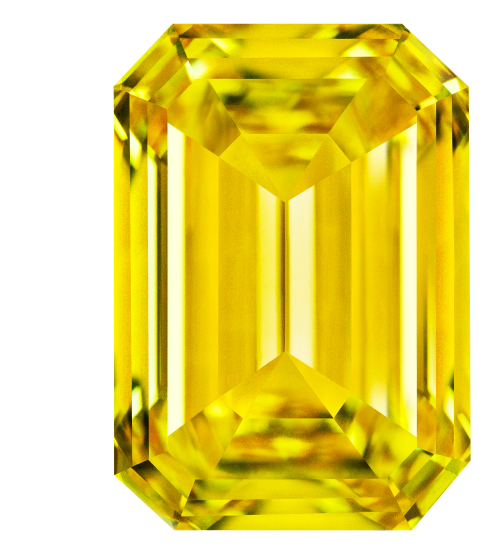 |
As a rule, impurities (e.g. nitrogen) accumulate within the diamond lattice due to the natural processes of heat and time. This usually leads to larger defects, like those common in the less pure IaA and IaB diamonds. For some reason, however, this is not the case for Zimmi diamonds and scientists at the GIA laboratory are still not exactly sure why. This mystery brings added fascination to these beautiful stones.
Auction houses and collectors attach an exceptionally high value to the yellow Zimmi diamonds, as illustrated by the following example.
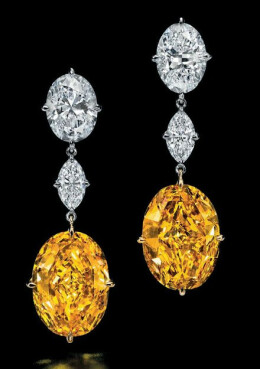 |
In 2016, Christie's sold a pair of earrings called "The Oriental Sunrise" containing two oval-cut Fancy Vivid Orange-Yellow Zimmi diamonds weighing 12.20 and 11.96 carats respectively for close to 12 million US dollars.
The added value of the origin of these diamonds can be compared to that of precious gemstones such as rubies and emeralds. "Pigeon blood" rubies from Burma are worth more than twice as much as rubies from elsewhere, and in the case of natural emeralds, stones from Colombia form the top of the pyramid. |
|
|
Why Does the Colour "Yellow" Shine So Brightly for Us?
A guest article by Manfred Eickhorst, Physics Engineer
We perceive the colour yellow very intensely especially in the springtime. It sprouts everywhere in nature after the grey winter - be it a bunch of daffodils on the kitchen table, the richly blossoming forsythia bush in the garden or the brightly shining sun in the sky. During the summer, our positive visual experience continues with waving yellow rapeseed fields and finally ends in the autumn with the blossoming of the sunflower fields and the yellowing of the leaves. |
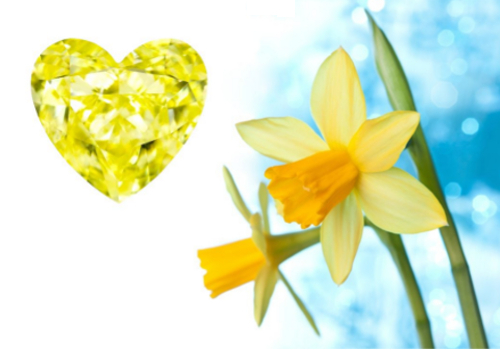 |
We asked ourselves why yellow varieties are so sought after and popular in the world of gemstones and diamonds. Manfred Eickhorst, an expert on light and optics, explains it to us as follows:
The high refraction of light in combination with saturated yellow is a special colour experience in daylight. It all started with the sun and the evolution of our colour perception. The result is a maximum sensitivity for light of wavelength 560 nm in the green-yellow range of the visual spectrum. In practice, we can still see the light of this colour even when all other colours can no longer be perceived at low brightness. This special property of colour vision leads to a "weighting" of the colour yellow in our lives that is probably unique. Thus, we also experience yellow in our everyday life as a warning colour and behave more consciously in its presence than with other natural colours. If we think of bees, wasps and fire salamanders, for example, we can see that yellow is also nature’s warning colour, one that is perceived particularly quickly and intensely.
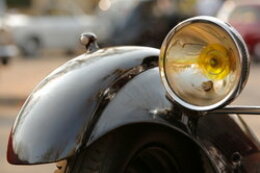 |
The colour yellow has also played a role in the historical retrospective of artificial light. If we look at traffic in the last century, for example, we can clearly remember the catchy headlights of French cars.
Left picture: An old Peugeot with yellow headlights. |
Or let's consider street lighting with the striking yellow of sodium vapour lamps. Incidentally, there were also economic reasons for these lamps to shine in rich yellow, because they had less electrical power than their relatives with white light - but were still bright enough.
www.eickhorst.com
To be found at INHORGENTA MUNICH 2022: Hall B3 / Stand 300A
|
|
From Our Collection:
A Preview of Some of Our Trade Fair Highlights
Pearshape / 1.23 ct / Fancy Yellow / VVS1 / GIA
Heart / 1.01 ct / Fancy Intense Yellow / VVS2 / GIA
Oval / 2.10 ct / Fancy Yellow / VVS2 / GIA
Square (Step Cut / Cut Corner) / 1.04 ct / Fancy Vivid Yellow / VVS1 / GIA
Emerald Cut / 3.01 ct / C1 / VVS
Radiant / 1.26 ct / Fancy Intense Yellow / VS1 / GIA
Square (Step Cut/Cut Corner) / 5.00 ct / Fancy Deep Brown Yellow / SI1 / GIA
Cushion / 0.78 ct / Fancy Deep Orangy Yellow / VS
|
|
The De Beers "Cullinan Blue" - Definitely Worth Reporting On!
On 27 April, Sotheby's Hong Kong will auction the largest and potentially most valuable blue diamond ever to go under the hammer - the De Beers "Cullinan Blue": a truly extraordinary 15.1 carat, step-cut, flawless blue diamond.
The diamond is valued at over 45 million dollars, according to Sotheby's. The GIA has graded the gem's colour as "Fancy Vivid Blue" and its clarity as "internally flawless".
To date, only five blue diamonds weighing more than 10 carats have ever been sold at auction and so far, none of them has exceeded 15 carats. |
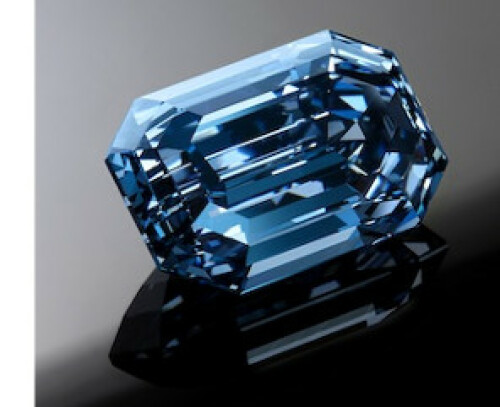 |
According to Wenhao Yu, chairman of the jewellery and watches department at Sotheby's Asia, this is one of the most important diamonds ever auctioned there. Furthermore, he says this particular type IIB blue diamond is a unique masterpiece, comparable to a major work of art. Not many diamonds can match this exquisite wonder of nature!
|
|
|
